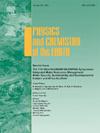The likelihood of a significant trend based on a family of Mann-Kendall tests for extreme rainfall in Borneo
IF 4.1
3区 地球科学
Q2 GEOSCIENCES, MULTIDISCIPLINARY
引用次数: 0
Abstract
Due to its ecological diversity, the island of Borneo is particularly vulnerable to the impacts of climate change. Positioned at the centre of the Maritime Continent, Borneo was the focus of this study, which thoroughly investigated the spatiotemporal trends of extreme rainfall across the region. By utilising the Expert Team on Climate Change Detection and Indices (ETCCDI) extreme rainfall indices, the study introduced a novel threshold-based likelihood classification to enhance the assessment of Mann-Kendall trend tests, enabling clearer identification of spatiotemporal patterns and providing practical guidance for risk assessment and decision-making. The Climate Hazards Group InfraRed Precipitation with Station (CHIRPS) daily rainfall dataset (1981–2022), covering 943 grid points, was used for this purpose. The results shoed that Borneo is expected to face a high-likelihood increase in extreme rainfall frequency ranging from 34.6 % to 52.6 %, with the central mountainous region experiencing the highest rise of 52.6 %. The affected areas are expected to expand southward and eastward, notably impacting southern Borneo (up to 36 grids) and East Kalimantan's eastern coast (up to 7 grids), with increases also observed in coastal-northern Sarawak, Brunei, and northwestern Sabah. These findings demonstrate the added value of combining multiple Mann-Kendall test variants with a likelihood framework to strengthen confidence in trend detection and effectively identify hotspots like southern Borneo and East Kalimantan's eastern coast. These results provide local governments, disaster management agencies, environmental planners, and water resource managers with a stronger scientific basis to develop targeted adaptation strategies and mitigate climate change impacts in Borneo.
根据对婆罗洲极端降雨的一系列Mann-Kendall测试,出现显著趋势的可能性
由于其生态多样性,婆罗洲岛特别容易受到气候变化的影响。婆罗洲位于海洋大陆的中心,是本研究的重点,该研究全面调查了该地区极端降雨的时空趋势。通过利用气候变化探测和指数专家组(ETCCDI)的极端降雨指数,本研究引入了一种新的基于阈值的似然分类,以加强对Mann-Kendall趋势检验的评估,从而更清晰地识别时空模式,并为风险评估和决策提供实用指导。本文采用了气候灾害组红外站降水(CHIRPS)日降水数据集(1981-2022),覆盖943个网格点。结果表明,婆罗洲极有可能面临极端降雨频率的增加,增幅从34.6%到52.6%不等,其中中部山区的增幅最高,为52.6%。预计受影响地区将向南和向东扩展,特别是婆罗洲南部(最多36个电网)和东加里曼丹东海岸(最多7个电网),砂拉越北部沿海地区、文莱和沙巴西北部也将出现增加。这些发现证明了将多个Mann-Kendall测试变体与可能性框架相结合的附加价值,可以增强趋势检测的信心,并有效识别婆罗洲南部和东加里曼丹东海岸等热点地区。这些结果为地方政府、灾害管理机构、环境规划者和水资源管理者制定有针对性的适应战略和减轻婆罗洲气候变化的影响提供了更有力的科学依据。
本文章由计算机程序翻译,如有差异,请以英文原文为准。
求助全文
约1分钟内获得全文
求助全文
来源期刊

Physics and Chemistry of the Earth
地学-地球科学综合
CiteScore
5.40
自引率
2.70%
发文量
176
审稿时长
31.6 weeks
期刊介绍:
Physics and Chemistry of the Earth is an international interdisciplinary journal for the rapid publication of collections of refereed communications in separate thematic issues, either stemming from scientific meetings, or, especially compiled for the occasion. There is no restriction on the length of articles published in the journal. Physics and Chemistry of the Earth incorporates the separate Parts A, B and C which existed until the end of 2001.
Please note: the Editors are unable to consider submissions that are not invited or linked to a thematic issue. Please do not submit unsolicited papers.
The journal covers the following subject areas:
-Solid Earth and Geodesy:
(geology, geochemistry, tectonophysics, seismology, volcanology, palaeomagnetism and rock magnetism, electromagnetism and potential fields, marine and environmental geosciences as well as geodesy).
-Hydrology, Oceans and Atmosphere:
(hydrology and water resources research, engineering and management, oceanography and oceanic chemistry, shelf, sea, lake and river sciences, meteorology and atmospheric sciences incl. chemistry as well as climatology and glaciology).
-Solar-Terrestrial and Planetary Science:
(solar, heliospheric and solar-planetary sciences, geology, geophysics and atmospheric sciences of planets, satellites and small bodies as well as cosmochemistry and exobiology).
 求助内容:
求助内容: 应助结果提醒方式:
应助结果提醒方式:


